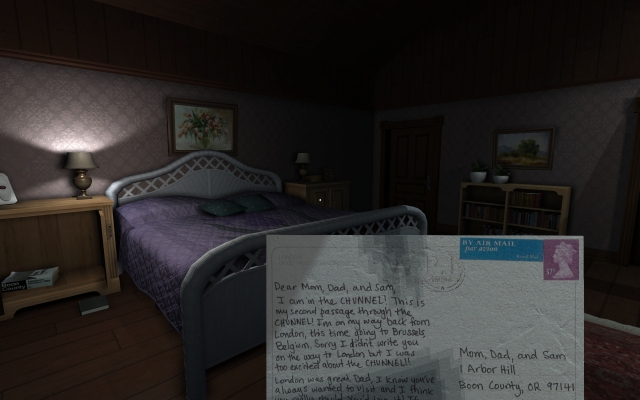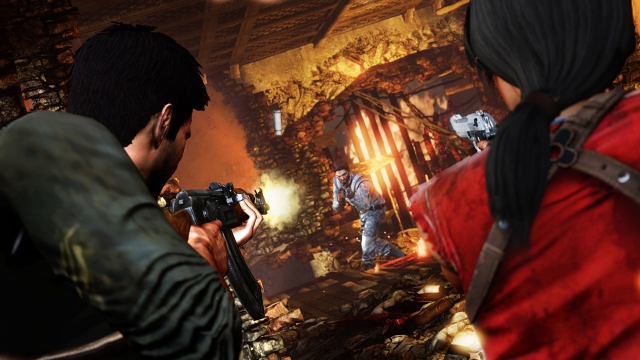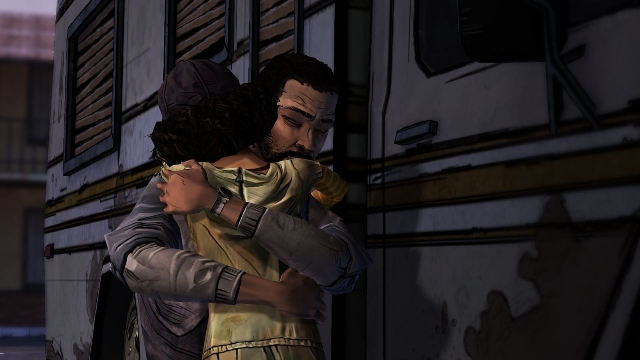
Game Design - Is It Time to Downsize?
Many AAA developers seem to be trying to one up each other by making the biggest, most bombastic game on the market. Bigger set pieces; bigger explosions; bigger budget. While games, as a medium, are certainly effective at providing these large scale experiences, they are also good at providing experiences on a more human scale, an approach that unfortunately goes un-utilised by most developers.
When creating a game on a small scale, large and open environments that exist purely as set dressing for the action can be exchanged for smaller game worlds, packed with visual details and objects that the player can interact with in a way that feels real and truly draws the player into the experience.
Take Gone Home -one of my favourite games of last year - for example. For those who don’t know, Gone Home is a story exploration game set entirely inside a fully-realised family home in which the player can examine and manipulate anything they find in the house. In the game you play as Kaitlin, a 20 year old who returns home in 1995 to find that everyone is missing; you must investigate the house and discover what happened there. By setting the game in a small family home the developers were forced to think of original interactions for the player to keep things interesting; it also created a sense of immersion by providing activities and scenes that players are familiar with from their everyday lives.

Of course, Gone Home isn’t a AAA title or even an action game, but that doesn’t mean the same design philosophy can’t be applied to a game that is both. To compare, for a moment, the sort of scale I’m talking about with films, just look at the classic action flick Die Hard. When I think of Die Hard the first moment I am reminded of is the scene where John McClane, barefoot and under gunfire, has to break for the exit, running on the shattered glass and cutting up his feet in the process. As a result, McClane is left with an injury that he must cope with for the rest of the movie. This is a moment that affects the protagonist on a very human level, one where the audience can sympathise with his pain, more so than a bullet wound, which most people will (hopefully) have no frame of reference for.
It’s not hard to picture a game that incorporates moments like this. A game where instead of killing countless terrorists, your objective is only to survive. The player would make use of rags found in the levels as makeshift bandages to stop wounds from bleeding, study floor plans for the best route to your objective, and kill enemies on only a few occasions. Not only would this solve some of the disconnect that occurs when wisecracking, everyman protagonists become ruthless killing machines *cough*Nathan Drake*cough*, it also allows the player to better engage with the protagonist due to his more vulnerable and relatable state.

It’s somewhat understandable that this design approach is not used more often, as it requires the programmers to create more complex systems, and it forces the designers to be more creative when they can’t simply repeat the same enemy encounters in different exotic locales. An upside of developing a game set in a smaller location is that it reduces the amount of art assets required, potentially saving on development cost.
Perhaps the most important thing to creating a sense of place in the game world is consistency. I can’t count how many times I’ve been exploring an environment only to stop dead in my tracks due to an invisible wall, or attempting to climb a ladder to no avail, despite having done so multiple times on identical ladders earlier on in the game. Moments like these only serve to remind me that the game is a rollercoaster and I’m just a passenger, along for the ride.
Interactivity in the environment is also key to creating an authentic-feeling world. Sometimes I’ve found immersion can be provided by small moments as simple as requiring the player to turn on a light in order to see in a darkened room, or having to move a chair into position and standing on it to reach an object on a high shelf.

There are signs of developers attempting to adopt this type of philosophy; Telltale’s The Walking Dead proved that smaller titles focusing on human interaction can be very successful, critically and commercially. More recently, Irrational Games’ creative director, Ken Levine, announced that the studio would be closing its doors, with Levine and roughly 15 ex-Irrational staff members forming a new studio. The new, much smaller team will be focusing on making “narrative-driven games for the core gamer that are highly replayable.” Obviously it’s a shame that so many talented people lost their job due to this move, but, personally, I’m very excited to see what the minds behind BioShock will do with their new small-scale attitude.
Not only could a small-scale approach potentially reduce development costs, but by creating a game in which the player can affect, and be affected by, their surroundings on a human scale, a game can become more than the sum of its parts. It can become a new world for the player to step into and lose themselves in. Failing that, you can always add more explosions.








COMMENTS